Bhutan, often celebrated for its natural beauty and commitment to conservation, is a paradise for bird watchers. This serene Himalayan kingdom hosts a variety of unique and vibrant bird species, making it one of the best birding spots in Bhutan. From the mystical Phobjikha Valley with its wintering black-necked cranes to the lush Bumdeling Wildlife Sanctuary and the diverse Zhemgang bird species, Bhutan offers a birding experience as rich and varied as its landscapes. Whether on a Bhutan bird watching tour or independently exploring, the chance to witness rare and endangered birds in Bhutan, coupled with the nation's robust eco-tourism efforts, ensures a memorable and impactful bird-watching journey. Engage in bird watching photography in Bhutan to capture the splendid avian life, supported by insights from our comprehensive bird watching travel guide Bhutan.
At Druk Holidays, we pride ourselves on being the premier choice for exploring Bhutan’s Top Bird Watching Spots. Our expertly guided tours provide unparalleled access to the kingdom's most serene and avian-rich habitats—from the iconic Phobjikha Valley, home to the majestic black-necked cranes, to the vibrant ecosystems of Zhemgang and Bumdeling Wildlife Sanctuary. With our deep commitment to sustainable eco-tourism and a keen focus on providing enriching bird watching experiences, we ensure that every guest has a memorable journey, immersed in Bhutan's natural beauty and birding wonders. Whether you're an avid birdwatcher or a nature lover seeking a peaceful retreat, Druk Holidays is your trusted partner in discovering the extraordinary bird species of Bhutan.
Phobjikha Valley
Nestled in the heart of Bhutan, Phobjikha Valley is a stunning glacial valley that is as serene as it is breathtaking. Renowned for its scenic landscapes and rich wildlife, it is particularly famous as the winter home of the black-necked cranes. These majestic birds migrate from the Tibetan Plateau to the valley each year, making it a prime spot for bird watchers and nature enthusiasts alike. The valley's vast expanse of open grassland and gentle slopes makes it an ideal location for these cranes and many other species.

- Black-necked Crane Migration: Witness the awe-inspiring sight of black-necked cranes as they descend upon the valley, a crucial wintering site for this endangered species.
- Conservation Efforts: The valley is a testament to Bhutan’s commitment to conservation, with several initiatives in place to protect the habitat of these rare birds and other wildlife.
- Nature Trails: Explore the numerous nature trails winding through the valley, perfect for observing the rich flora and fauna up close.
- Gangtey Monastery: Overlooking the valley, the historic Gangtey Monastery offers spiritual insights and panoramic views of the surrounding landscape.
- Community-based Tourism: Engage with the local community through sustainable tourism practices that benefit both visitors and residents.
- Photography Opportunities: The valley's landscape, with its stunning vistas and unique wildlife, is a paradise for photographers looking to capture the essence of Bhutan’s natural beauty.
- Festivals: Participate in the annual Black-necked Crane Festival, which celebrates the arrival of the cranes with cultural programs, dances, and local cuisine, providing a glimpse into the rich cultural heritage of the region.
Phobjikha Valley is not just a destination; it's an experience that encapsulates the beauty of Bhutan's wildlife and the tranquility of its landscapes. Whether you are a bird watcher, a nature lover, or simply someone in search of peace, Phobjikha Valley offers a unique and memorable journey into the heart of Bhutan’s environmental and cultural splendor. Visit with Druk Holidays to ensure a respectful and enriching travel experience that highlights the best of what the valley has to offer.
Bumdeling Wildlife Sanctuary
Bumdeling Wildlife Sanctuary, nestled in the northeastern part of Bhutan, is a vital conservation area that offers a diverse range of habitats and is a critical refuge for numerous species of wildlife, including several endangered birds. This sanctuary covers approximately 1,520 square kilometers, extending from alpine mountains to subtropical forests, creating a unique ecosystem perfect for a variety of flora and fauna.
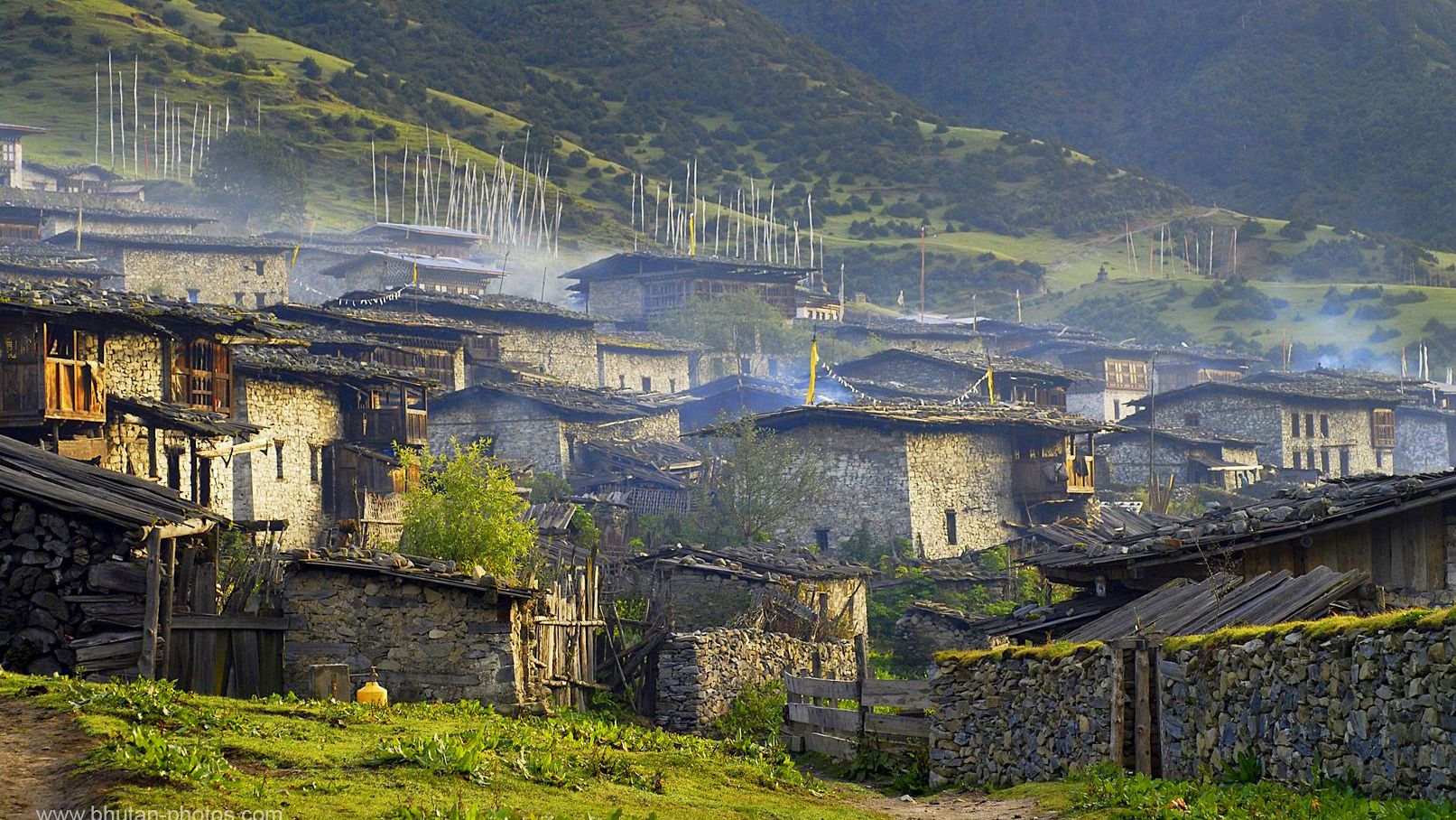
- Winter Home for Black-necked Cranes: Similar to Phobjikha Valley, Bumdeling serves as a winter habitat for the endangered black-necked cranes, which migrate here from Tibet during the colder months.
- Diverse Bird Species: The sanctuary is known for its rich avian diversity, hosting more than 150 species of birds, making it a premier destination for bird watchers.
- Cultural Significance: The area holds great cultural importance for the local communities, incorporating traditional practices and festivals that are closely linked to the natural environment.
- Rigsum Gonpa Monastery: Located within the sanctuary, this monastery offers spiritual insights and adds to the cultural richness of the area.
- Trekking and Hiking Opportunities: Various trails offer visitors the chance to explore the scenic beauty and diverse wildlife of the sanctuary on foot.
- Sustainable Tourism Practices: Efforts to promote eco-tourism help preserve the sanctuary’s ecological balance while benefiting local communities economically.
- Flora and Fauna: In addition to birds, the sanctuary is home to other wildlife like the snow leopard, red panda, and Himalayan musk deer, alongside a vast array of medicinal plants and high-altitude vegetation.
Bumdeling Wildlife Sanctuary is a treasure trove of natural beauty and biodiversity. It offers a serene escape for nature lovers and provides bird enthusiasts with the opportunity to observe some of the most spectacular and rare bird species in Bhutan. Managed with a focus on conservation and community involvement, Bumdeling is a model of sustainable tourism that protects its natural resources while welcoming visitors to enjoy its pristine environment.
Zhemgang
Zhemgang is one of Bhutan's lesser-explored gems, known for its rich biodiversity and stunning landscapes. This district in central Bhutan is celebrated for its pristine forests and a wide range of habitats, making it a hotspot for birdwatchers and nature enthusiasts. The area is particularly noted for its efforts in conserving the diverse wildlife and traditional Bhutanese culture, offering visitors a unique blend of natural beauty and cultural richness.
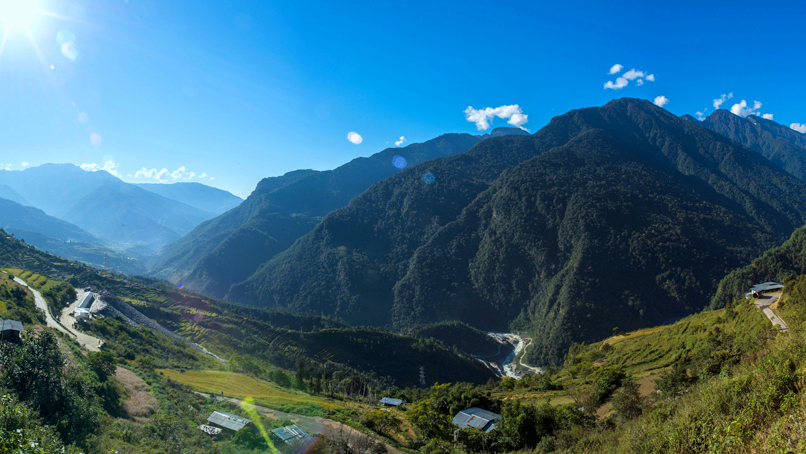
- Diverse Birdlife: Zhemgang is renowned for its exceptional variety of bird species, making it a crucial area for avian biodiversity in Bhutan. Birdwatchers can spot the Rufous-necked hornbill, Great hornbill, and various other endangered and exotic birds.
- Subtropical Forests: The district's extensive subtropical forests are home to a wealth of wildlife, providing ideal conditions for many species of flora and fauna.
- Conservation Programs: Zhemgang is actively involved in wildlife conservation programs, including community-led initiatives that protect the natural environment while supporting sustainable livelihoods.
- Cultural Attractions: The region hosts several ancient monasteries and traditional Bhutanese villages, offering insights into the spiritual and everyday lives of its inhabitants.
- Trekking and Adventure: With its rugged terrain and unspoiled nature, Zhemgang offers numerous trekking routes that cater to both seasoned hikers and casual walkers looking to explore Bhutan’s wilderness.
- Community-based Tourism: Efforts to integrate tourism with local communities provide visitors with an authentic experience, from homestays to participating in local festivals.
- Biodiversity Hotspot: Beyond birds, Zhemgang is a sanctuary for other wildlife, including the Bengal tiger, clouded leopard, and the rare golden langur, enhancing its appeal as a destination for wildlife safaris.
Zhemgang presents an unmatched opportunity to explore the rich tapestry of Bhutan’s wildlife and cultural heritage. Its commitment to conservation and community involvement makes it an exemplary destination for those seeking a deeper connection with nature and traditional Bhutanese ways of life. Whether you’re an avid birdwatcher or a trekker in search of adventure, Zhemgang offers a profound and enriching experience in one of Bhutan’s most beautiful and unspoiled regions.
Tingtibi
Tingtibi is a captivating location in the district of Zhemgang, Bhutan, renowned for its vibrant biodiversity and excellent bird watching opportunities. Situated in the subtropical belt of central Bhutan, Tingtibi is an area where nature lovers and bird enthusiasts can experience the untouched beauty of Bhutan’s wilderness up close. This region serves as a crucial habitat for a variety of bird species and is particularly active during the migratory seasons, making it an ideal destination for bird watching tours.
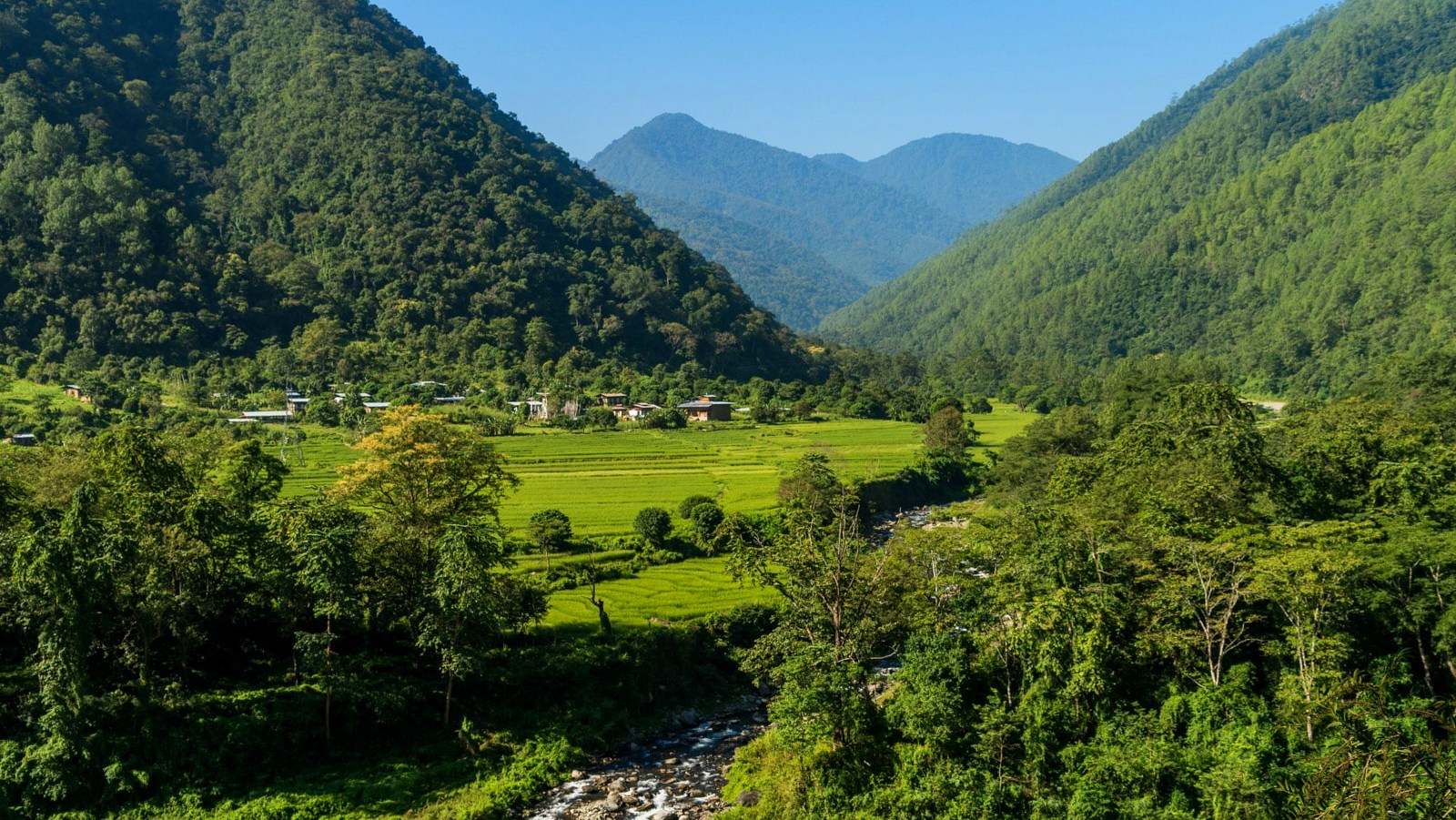
- Rich Bird Diversity: Tingtibi is famed for its extensive variety of bird species. It’s an ideal spot for observing numerous types of hornbills, including the Rufous-necked and Great Hornbills, which are among the main attractions.
- Optimal Bird Watching Seasons: The best times for bird watching in Tingtibi are during the spring and autumn months when the migratory birds pass through, offering spectacular sightings and a vibrant atmosphere for bird enthusiasts.
- Accessible Nature Trails: The region boasts well-maintained trails that weave through the lush forests, providing easy access to prime bird watching spots and stunning natural scenery.
- Community Engagement: Tingtibi's approach to tourism includes significant engagement with local communities, allowing visitors to learn about and contribute to conservation efforts directly.
- Photography Opportunities: For wildlife photographers, Tingtibi offers unparalleled opportunities to capture the unique wildlife and scenic landscapes of Bhutan.
- Conservation Initiatives: The area is involved in various conservation projects aimed at preserving its unique ecosystem and promoting sustainable tourism practices.
- Serene Environment: Apart from birds, Tingtibi’s tranquil environment also attracts visitors looking for a peaceful retreat away from the bustling tourist paths, offering a chance to relax and reconnect with nature.
Tingtibi stands out as a must-visit destination for bird watchers and nature lovers visiting Bhutan. With its abundant birdlife and beautiful natural landscapes, coupled with a commitment to conservation and community involvement, Tingtibi offers an authentic and enriching outdoor experience. Whether you are an avid birder, a wildlife photographer, or simply a traveler seeking tranquility, Tingtibi provides a perfect blend of nature, culture, and conservation.
Royal Manas National Park
Royal Manas National Park stands as Bhutan’s oldest and most prestigious national park, revered not only for its historical significance but also for its exceptional biodiversity. Located in the southern part of Bhutan, this park shares a seamless northern border with India’s Manas Tiger Reserve, creating a vast transboundary conservation area that is crucial for wildlife preservation in the region.
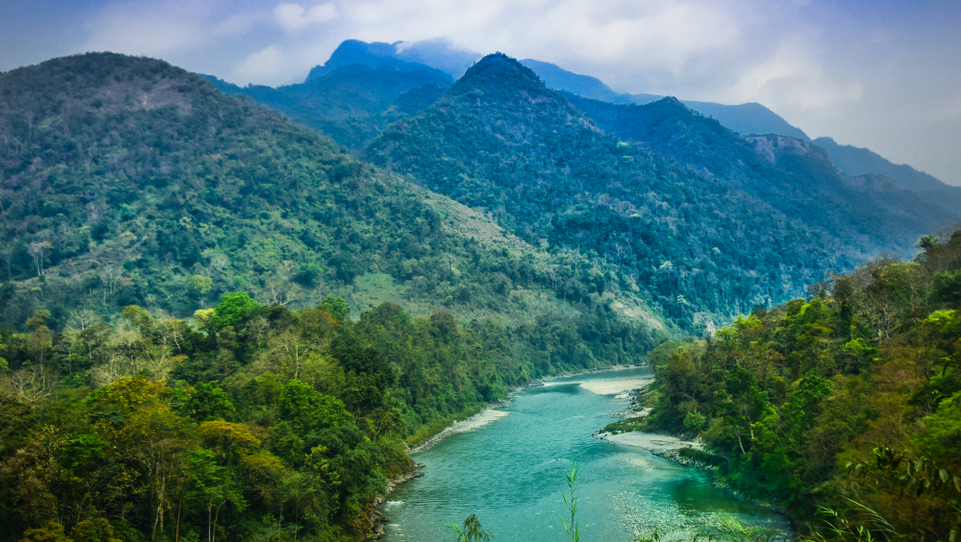
- Diverse Wildlife: The park is home to an astonishing array of wildlife, including Bengal tigers, Asian elephants, one-horned rhinoceroses, and the rare golden langur, making it a vital area for conservation and wildlife enthusiasts.
- Birdwatcher’s Paradise: With over 365 species of birds recorded, Royal Manas National Park is a dream destination for bird watchers. It provides habitat for a variety of avian species, from the exotic Bengal Florican to the Great Hornbill.
- Rich Ecosystems: The park’s varied ecosystems, ranging from tropical monsoon forests to subtropical forests, offer visitors a chance to experience and understand the complexity of Bhutan’s natural heritage.
- Community Involvement: Integral to the park’s operations is the involvement of local communities in conservation efforts. This collaborative approach helps promote sustainable tourism and wildlife protection.
- Adventure Activities: For those seeking adventure, the park offers numerous activities such as rafting on the Manas River, jungle safaris, and trekking through remote areas of the park.
- Conservation Success Stories: The park is noted for its successful conservation projects, including the recovery of species that were once near extinction in the area, showcasing Bhutan’s commitment to wildlife preservation.
- Cultural Richness: Visitors to Royal Manas National Park can also explore the rich cultural heritage of the region, including local Bhutanese communities that have lived in harmony with the forest for centuries.
Royal Manas National Park is not just a sanctuary for wildlife but a vibrant testament to Bhutan’s dedication to conservation and sustainable tourism. It offers a unique blend of adventure, education, and tranquility, making it a must-visit destination for anyone interested in the natural world and the efforts to protect it. Whether you’re an avid birdwatcher, a wildlife photographer, or an adventure seeker, the park provides a profound experience that resonates with the spirit of Bhutan’s environmental ethos.
Chele La Pass
Chele La Pass, perched at an altitude of over 3,800 meters, is one of Bhutan's highest road-accessible passes and offers breathtaking views of the surrounding majestic peaks, including the sacred Jomolhari and Jichu Drake mountains. This high-altitude pass is a popular destination not only for its scenic vistas but also for its rich biodiversity, making it an exceptional spot for bird watching and nature hikes.
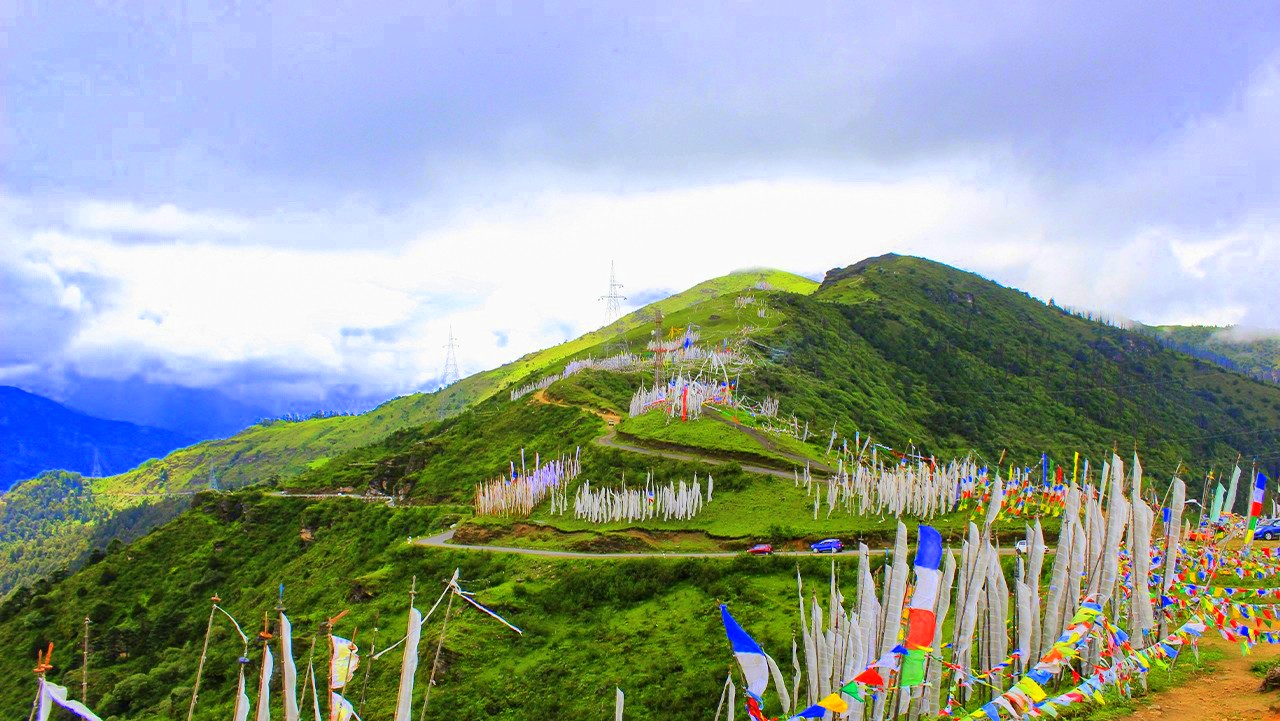
- Spectacular Views: From the pass, visitors can enjoy panoramic views of the Himalayan range, offering some of the most photographable scenes in Bhutan.
- High-Altitude Flora and Fauna: The area around Chele La Pass is home to a unique range of high-altitude flora, including diverse rhododendron forests, which bloom vibrantly in the spring, creating a colorful tapestry against the rugged backdrop.
- Bird Watching: The pass is a fantastic location for bird enthusiasts, with opportunities to spot species like the Blood Pheasant and Himalayan Monal, which are adapted to the alpine climate.
- Hiking and Trekking: Several trails lead from the pass, offering adventurous hikes to both novice and experienced trekkers. These trails often lead to secluded monasteries and stunning, remote areas of the country.
- Accessibility: Despite its high elevation, Chele La Pass is relatively accessible by road, which makes it a convenient day trip from nearby towns like Paro and Haa.
- Cultural Insights: Nearby, visitors can explore traditional villages and learn about the lifestyle of the local communities living at high altitudes, providing a glimpse into the authentic Bhutanese rural life.
- Spiritual Sites: The pass is dotted with colorful prayer flags and offers access to sacred sites, adding a spiritual dimension to the natural beauty and making it a place of peace and meditation.
Chele La Pass is an ideal destination for those looking to experience the beauty and tranquility of Bhutan’s high-altitude landscapes. Whether you're a bird watcher, trekker, photographer, or someone seeking a peaceful retreat into nature, Chele La Pass offers a unique and memorable adventure in one of the most picturesque settings in Bhutan. Its accessibility and the variety of activities available make it a must-visit for anyone traveling through this beautiful Himalayan kingdom.
Jigme Dorji National Park
Jigme Dorji National Park is one of Bhutan's most significant and second-largest national parks, covering a vast area that ranges from subtropical forests in the south to cold alpine highlands in the north. Named after the late Jigme Dorji Wangchuck, the third King of Bhutan, this park is a critical conservation area and plays a pivotal role in the protection of numerous endemic and endangered species.
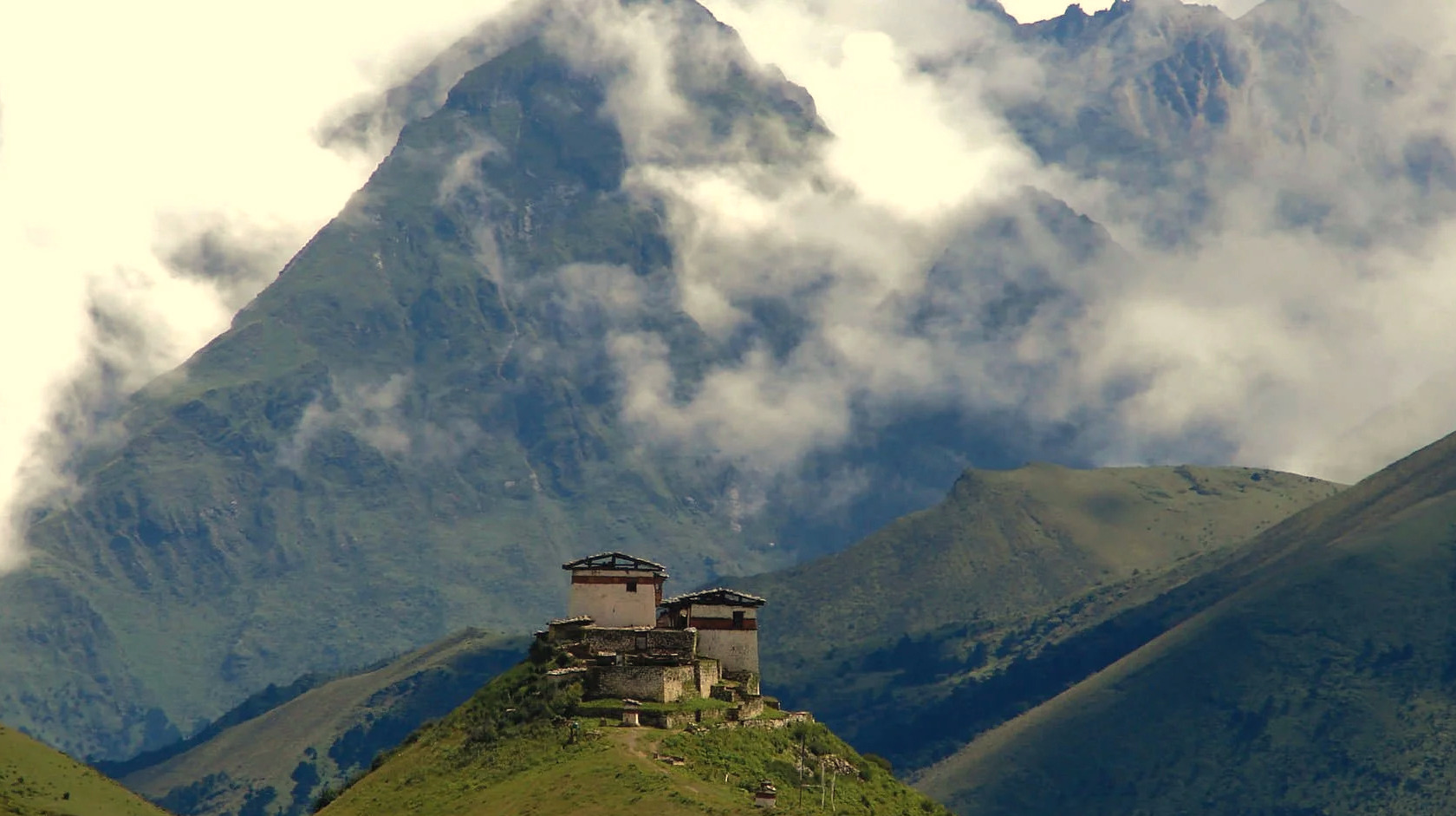
- Diverse Ecosystems: The park spans several climatic zones, from lush subtropical rainforests to rugged alpine terrain, supporting an incredibly diverse range of flora and fauna.
- Wildlife Sanctuary: It is home to many of Bhutan’s iconic species such as the snow leopard, takin, blue sheep, and the elusive Bengal tiger, making it a prime spot for wildlife enthusiasts.
- Birdwatching Haven: With over 300 species of birds, including the endangered white-bellied heron and the black-necked crane during their migration, Jigme Dorji National Park offers exceptional birdwatching opportunities.
- Glacial Lakes and Rivers: The park features several stunning glacial lakes and the headwaters of some of Bhutan’s major rivers, providing spectacular natural scenery and important habitats for aquatic biodiversity.
- Cultural Sites: Several important cultural and historical sites are located within the park, including the famous Mount Jomolhari, revered by local communities and a popular destination for trekkers.
- Trekking Opportunities: The park offers a range of trekking routes, varying in difficulty, which allow visitors to explore its scenic beauty and diverse ecosystems up close.
- Conservation Efforts: Jigme Dorji National Park is at the forefront of Bhutan's conservation efforts, implementing initiatives that protect wildlife while promoting sustainable use of natural resources.
Jigme Dorji National Park is not just a hub of biodiversity but also a stunning example of successful conservation practices that integrate community involvement and sustainable tourism. Its vast landscapes provide a sanctuary for both wildlife and the human spirit, making it a must-visit for anyone looking to explore the natural wonders and cultural heritage of Bhutan. Whether you're an avid birdwatcher, a wildlife photographer, or a trekker, the park promises an enriching and inspiring adventure.
Best Time for Bird Watching in Bhutan
The best time for bird watching in Bhutan largely depends on what you hope to see and experience during your visit. The country's varied elevations and climates support a rich diversity of bird species year-round, but certain times of the year offer optimal birding opportunities due to migratory patterns and breeding seasons. Here’s a guide to help you plan the ideal bird watching trip:
- Spring (March to May): Spring is widely regarded as the best time for bird watching in Bhutan. During these months, the weather is pleasant with moderate temperatures, and the forests come alive with rhododendrons and other flowering plants. This is the breeding season for many bird species, and their vibrant plumage and active mating calls make them easier to spot and observe. Birds like the Black-necked Crane have just left, but many migratory birds are arriving, and residents are in full song.
- Autumn (Late September to November): Autumn is another excellent time for bird watching in Bhutan. As the monsoon rains taper off, clear skies and cooler temperatures prevail, creating comfortable conditions for birding. This season also coincides with the migration of many species, particularly those returning to their wintering grounds in the south. Notable sights include raptors and other high-altitude dwellers that move to lower elevations during this time.
- Winter (December to February): Winter in Bhutan can be quite cold, especially in the higher elevations, but it's a fantastic time to see winter migrants from the north, including the majestic Black-necked Cranes in the Phobjikha Valley. Bird watchers can also enjoy relatively crowd-free viewing during this season, as tourist numbers are generally lower. This season is ideal for spotting birds that are drawn to the lower valleys where temperatures are milder.
- Monsoon (June to Early September): While the monsoon season is less ideal due to heavy rains and the potential for obscured visibility, it can still be rewarding for the dedicated birder. Many species are nesting during this time, and the lush vegetation supports a rich insect life that attracts numerous bird species. However, trekking and remote travel can be challenging, and some trails may be inaccessible due to mud and landslides.
For the most vibrant and diverse bird watching experience, planning your visit in either spring or autumn is advisable. These seasons offer the best combination of climate, bird activity, and accessibility, providing bird watchers with numerous opportunities to engage with Bhutan’s rich avian life in some of the most breathtaking natural settings on earth.
Essential Tips for Bhutan’s Top Bird Watching Spots
Bhutan, with its pristine ecosystems and diverse habitats, is a bird watcher's paradise. To maximize your experience in this breathtaking country, it's important to consider several tips that will enhance your birding adventure. Here are ten essential tips for exploring Bhutan's top bird watching spots:
- Choose the Right Time of Year: Plan your visit during the optimal bird watching seasons, typically spring (March to May) and autumn (September to November), when the largest variety of birds are either breeding or migrating.
- Hire a Local Guide: A knowledgeable local guide can provide invaluable insights, help in identifying species, and lead you to the best spots for bird watching that you might otherwise miss.
- Pack Appropriate Gear: Ensure you have the right gear, including binoculars, a field guide, appropriate clothing for varying weather conditions, and comfortable hiking shoes.
- Be Patient and Quiet: Bird watching often requires patience and silence, as birds are easily startled by noise and sudden movements.
- Start Early in the Morning: Birds are most active during the early morning hours, so starting your day at dawn increases your chances of seeing a wide variety of birds.
- Keep a Bird Checklist: Bhutan hosts over 670 bird species. Keeping a checklist will help you keep track of the species you have seen and those you are likely to find in different habitats.
- Respect Wildlife and Habitats: Always follow guidelines to minimize your impact on natural habitats and the birds you are observing. This includes staying on marked trails and avoiding areas that are ecologically sensitive.
- Document Your Sightings: Taking photos or keeping a journal can enhance your experience and help with species identification later. However, ensure your actions don’t disturb the birds.
- Learn Local Customs and Regulations: Understanding and respecting local customs and national park regulations can enhance your interaction with local communities and ensure compliance with conservation practices.
- Prepare for the Altitude: Many of Bhutan’s bird watching spots are at high elevations. Acclimatize appropriately and stay hydrated to avoid altitude sicknes
Following these tips will help you make the most of your bird watching experience in Bhutan, allowing you to enjoy the rich avian diversity responsibly and safely. Whether you’re an amateur with a newfound interest in birding or an experienced ornithologist, Bhutan offers a spectacular backdrop to observe some of the most exotic birds in their natural environments.
Bhutan's top bird watching spots offer an enchanting escape into the heart of the Himalayas, where diverse ecosystems flourish and rare avian species thrive. From the serene valleys housing the elegant black-necked cranes to the lush forests echoing with the calls of exotic birds, these spots provide a pristine backdrop for both seasoned birders and nature enthusiasts. Exploring these areas not only connects one with the natural world but also supports Bhutan's commendable efforts in conservation and sustainable tourism. Whether you're capturing the vibrant plumage through a lens or observing these splendid creatures in silence, bird watching in Bhutan is a profound experience that resonates with the beauty and biodiversity of this unique country.
FAQs for the Bhutan’s Top Bird Watching Spots
Q: What is the best time of year for bird watching in Bhutan?
A: The optimal times for bird watching in Bhutan are during the spring (March to May) and autumn (September to November) when many species are either migrating or in breeding plumage.
Q: Are there any specific regions in Bhutan known for bird watching?
A: Yes, regions such as Phobjikha Valley, Bumdeling Wildlife Sanctuary, Zhemgang, and the Royal Manas National Park are renowned for their bird populations and diverse habitats.
Q: Do I need a guide for bird watching in Bhutan?
A: While not mandatory, hiring a local guide is highly recommended as they can provide expert knowledge on bird species and the best local spots, enhancing your bird watching experience.
Q: What kind of birds can I expect to see in Bhutan?
A: Bhutan is home to a wide variety of birds including the black-necked crane, Rufous-necked hornbill, Himalayan monal, and many species of pheasants and raptors.
Q: Are there any conservation efforts in place to protect bird habitats in Bhutan?
A: Yes, Bhutan is proactive in its conservation efforts with several protected areas and national parks that maintain habitats and promote sustainable practices that help preserve its rich biodiversity.
Q: What should I bring with me for bird watching in Bhutan?
A: Essential items include high-quality binoculars, a camera, appropriate clothing for varying weather conditions, and a bird field guide to help identify different species.
Q: Can I participate in bird watching throughout the year?
A: Yes, while spring and autumn are the best seasons, winter also offers unique bird watching opportunities, especially for migratory species like the black-necked crane.
Q: How accessible are the bird watching spots in Bhutan?
A: Many of the top bird watching locations are accessible by road, though some may require light to moderate hiking to reach the best viewing areas.
Q: Is bird watching in Bhutan suitable for beginners?
A: Absolutely, Bhutan offers a range of bird watching experiences that cater to both beginners and experienced birders, with opportunities to see common and rare species alike.
Q: Are there any specific bird watching tours available in Bhutan?
A: Yes, there are several tour operators, including Druk Holidays, that offer specialized bird watching tours tailored to showcase the best of Bhutan’s avian life in various natural settings.



